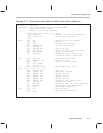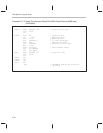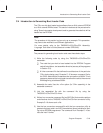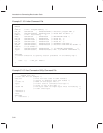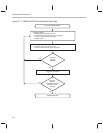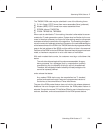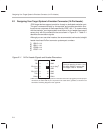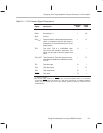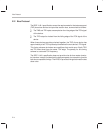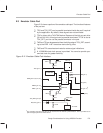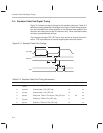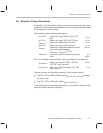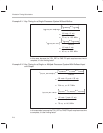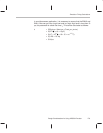
Designing Your Target System’s Emulator Connector (14-Pin Header)
E-2
E.1 Designing Your Target System’s Emulator Connector (14-Pin Header)
JTAG target devices support emulation through a dedicated emulation port.
This port is accessed directly by the emulator and provides emulation func-
tions that are a superset of those specified by IEEE 1149.1. To communicate
with the emulator,
your target system must have a 14-pin header
(two rows of
seven pins) with the connections that are shown in Figure E–1. Table E–1
describes the emulation signals.
Although you can use other headers, the recommended unshrouded, straight
header has these DuPont connector systems part numbers:
65610–114
65611–114
67996–114
67997–114
Figure E–1. 14-Pin Header Signals and Header Dimensions
TDI 3 4 GND
TDO 7 8 GND
TMS 1 2 TRST
TCK_RET 9 10 GND
TCK 11 12 GND
Header Dimensions:
Pin-to-pin spacing, 0.100 in. (X,Y)
Pin width, 0.025-in. square post
Pin length, 0.235-in. nominal
PD (V
CC
)5 6 no pin (key)
†
EMU0 13 14 EMU1
†
While the corresponding female position on the cable connector is plugged to prevent improper
connection, the cable lead for
pin 6 is present in the cable and is grounded, as shown in the
schematics and wiring diagrams in this appendix.



